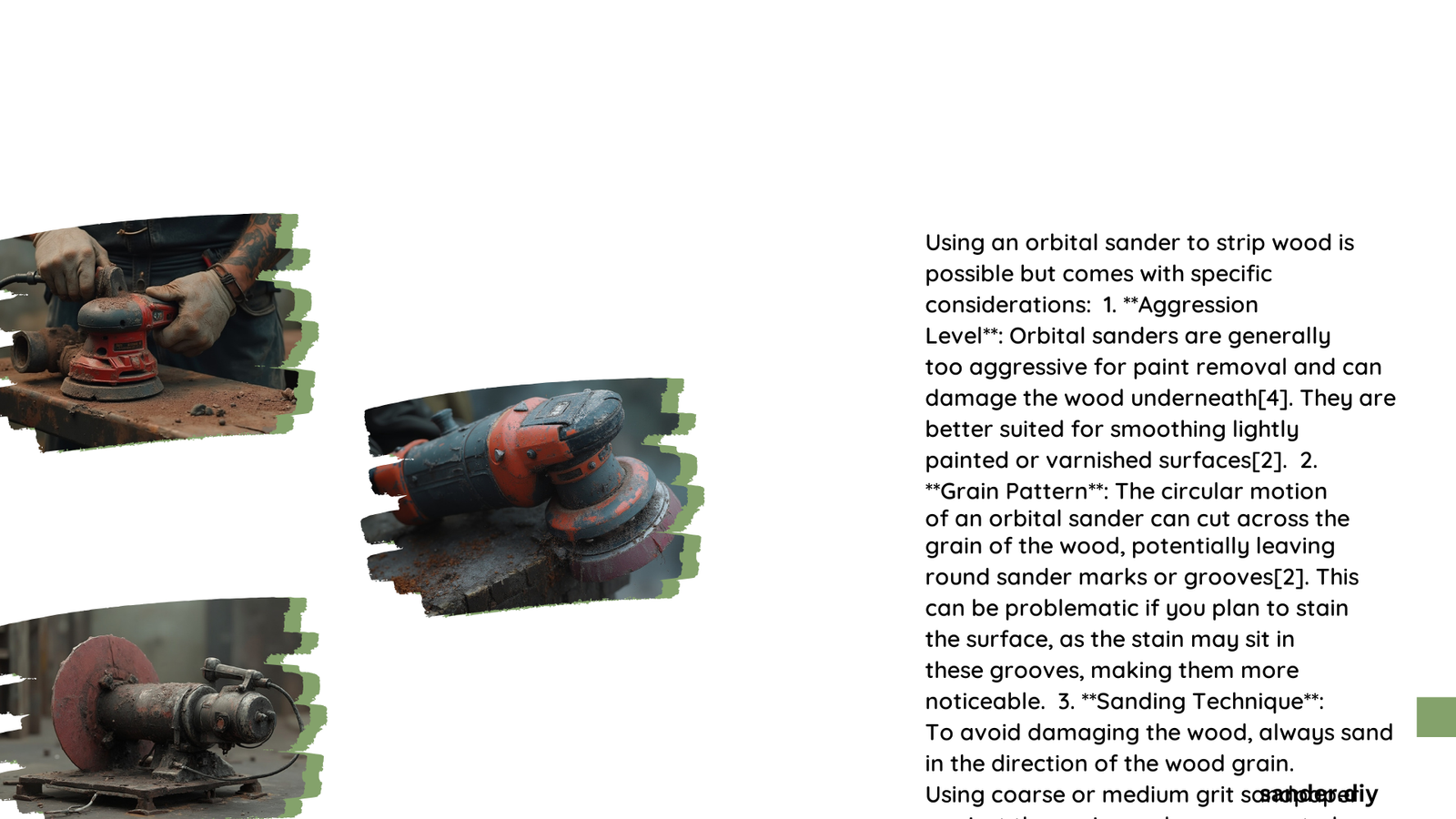An orbital sander can be an effective tool for stripping wood, offering a balance of efficiency and control. While it may not be as aggressive as other power tools, it can effectively remove old finishes, paint, or varnish when used correctly. This method is particularly suitable for flat surfaces and can save time compared to manual sanding. However, proper technique and the right sandpaper are crucial for achieving the best results without damaging the wood.
What Are the Benefits of Using an Orbital Sander for Wood Stripping?
Using an orbital sander for wood stripping offers several advantages:
- Efficiency: Covers large areas quickly compared to hand sanding.
- Versatility: Suitable for various wood types and finishes.
- Control: Provides more control than more aggressive power tools.
- Smooth Finish: Can achieve a smooth surface when used correctly.
How to Properly Use an Orbital Sander for Wood Stripping?

To effectively use an orbital sander for stripping wood, follow these steps:
- Prepare the Area:
- Clear the workspace of debris.
-
Wear safety gear (gloves, face mask, protective eyewear).
-
Choose the Right Sandpaper:
- Start with coarse grit (80-100) for initial stripping.
-
Progress to finer grits (120-220) for smoothing.
-
Load the Sandpaper:
-
Ensure tight and secure attachment to the sander’s pad.
-
Sanding Technique:
- Move with the wood grain.
- Use steady, overlapping patterns.
-
Apply light pressure; let the sander’s weight do the work.
-
Work in Sections:
- Divide large areas into manageable sections.
-
Clean between grit changes to prevent scratches.
-
Final Touches:
- Hand-sand for a perfect finish and to reach intricate areas.
What Grit Sandpaper Should I Use for Wood Stripping?
The choice of sandpaper grit is crucial for effective wood stripping:
| Grit Range | Purpose | Best For |
|---|---|---|
| 80-100 | Initial stripping | Removing thick finishes or paint |
| 120-150 | General smoothing | Evening out the wood surface |
| 220+ | Fine finishing | Preparing for staining or painting |
How Does Orbital Sanding Compare to Hand Sanding for Wood Stripping?
When comparing orbital sanding to hand sanding for wood stripping, consider these factors:
- Efficiency:
- Orbital Sander: Faster for large, flat surfaces.
-
Hand Sanding: Better for intricate details and small areas.
-
Control:
- Orbital Sander: Less precise but covers more area quickly.
-
Hand Sanding: Offers more control, especially for delicate work.
-
Finish Quality:
- Orbital Sander: Can leave swirl marks if not used correctly.
-
Hand Sanding: Provides a more controlled, precise finish.
-
Time Requirements:
- Orbital Sander: Quicker for larger projects.
- Hand Sanding: More time-consuming but necessary for perfect results.
What Are Some Effective Orbital Sander Brands for Wood Stripping?
Here are some top-rated orbital sanders suitable for wood stripping:
- DeWalt DWE6423K
- Price Range: $50-$70
-
Features: Powerful motor, dust-sealed switch
-
Bosch ROS20VSC
- Price Range: $40-$60
-
Features: Variable speed control, compact design
-
Makita BO5041K
- Price Range: $60-$80
- Features: Ergonomic design, powerful motor
What Safety Precautions Should I Take When Using an Orbital Sander for Wood Stripping?
Safety is paramount when using an orbital sander for wood stripping:
- Wear Protective Gear:
- Safety goggles to protect eyes from dust and debris.
- Dust mask to prevent inhalation of fine particles.
-
Hearing protection for prolonged use.
-
Ensure Proper Ventilation:
-
Work in a well-ventilated area to minimize dust accumulation.
-
Maintain the Tool:
- Regularly check for worn parts or loose connections.
-
Clean the sander after each use to prevent dust buildup.
-
Use Correct Technique:
- Avoid applying excessive pressure to prevent damage to the wood.
-
Keep the sander moving to prevent gouging or uneven sanding.
-
Electrical Safety:
- Inspect cords for damage before use.
- Keep the work area dry to prevent electrical hazards.
How Can I Achieve the Best Results When Using an Orbital Sander for Wood Stripping?
To achieve optimal results when using an orbital sander for wood stripping:
- Start with the Right Grit:
- Begin with a coarse grit to remove the bulk of the finish.
-
Gradually progress to finer grits for a smooth surface.
-
Maintain Even Pressure:
- Let the weight of the sander do the work.
-
Avoid tilting the sander, which can create uneven surfaces.
-
Move Steadily:
- Keep the sander moving at a consistent pace.
-
Overlap each pass slightly for even coverage.
-
Clean Between Grits:
- Vacuum or brush away dust between grit changes.
-
This prevents coarser particles from scratching the surface.
-
Check Your Work:
- Regularly inspect the surface for missed spots or uneven areas.
-
Use adequate lighting to spot imperfections.
-
Finish with Hand Sanding:
- Use fine-grit sandpaper for a final hand-sanding pass.
- This helps remove any remaining swirl marks and achieves a perfect finish.
By following these guidelines, you can effectively use an orbital sander to strip wood, achieving professional-quality results while maintaining the integrity of the wood surface.
